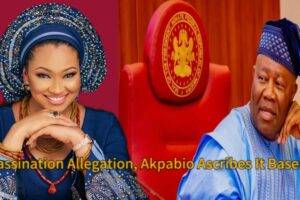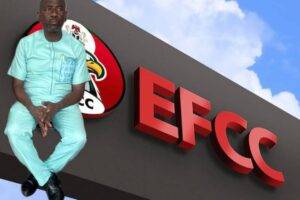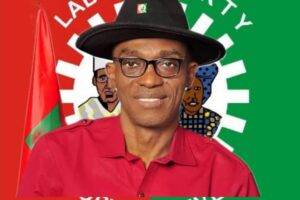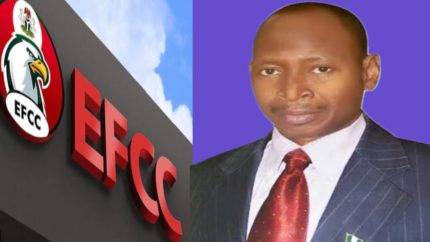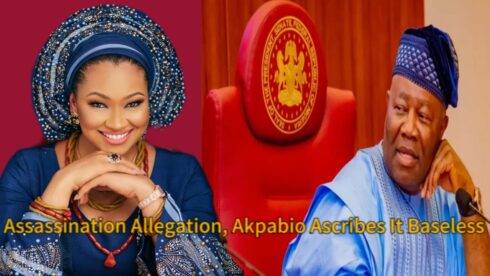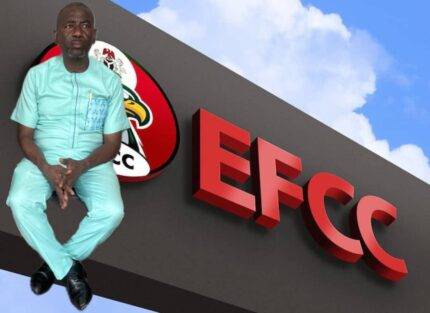Former AGF Ahmed Idris alleges deceit by EFCC
It was purported that the trial of Ahmed Idris and his co-defendants, the former Accountant General has leveled serious accusations against the EFCC, claiming he was misled into confessing to the N109bn fraud charges. Idris asserts that the anti-corruption agency offered him immunity in return for providing information that would implicate the minister of finance and certain governors. This startling revelation not only casts doubt on the credibility of the investigation but also prompts concerns regarding the ethical conduct and tactics employed by the EFCC in pursuing justice.
As the courtroom drama unfolds, Ahmed Idris allegations introduce a layer of complexity to the case, shedding light on potential misconduct within the EFCC. The claim of promised immunity in exchange for targeted information raises fundamental questions about the fairness and transparency of the investigation process. This unforeseen development not only challenges the veracity of the charges against Ahmed Idris and his co-defendants but also brings into question the broader integrity of the anti-corruption efforts, leaving stakeholders and the public grappling with uncertainties surrounding the judicial proceedings and the agency’s methods.
Idris, Akindele, and Usman facing 14 charges of fraud
In a high-stakes legal battle, the former Attorney General of the Federation (AGF), Godfrey Olusegun Akindele, and Mohammed Kudu Usman face a formidable trial encompassing 14 charges linked to an astonishing N109.5 billion theft and criminal breach of trust. This complex legal saga takes a unique turn with the involvement of Gezawa Commodity Market and Exchange Limited, further complicating the intricacies of the case. Unraveling the alleged financial misconduct hinges on a meticulous examination of the specific charges leveled against the accused trio and the intricacies surrounding their purported misappropriation.
Diving into the granular details of each charge becomes imperative for a comprehensive understanding of the legal proceedings. From the nature of the financial offenses to the role of Gezawa Commodity Market and Exchange Limited, decoding the intricacies of these allegations is paramount. Navigating this legal labyrinth demands a keen eye for detail, shedding light on the nuances that will ultimately play a pivotal role in determining the outcome of this high-profile case.
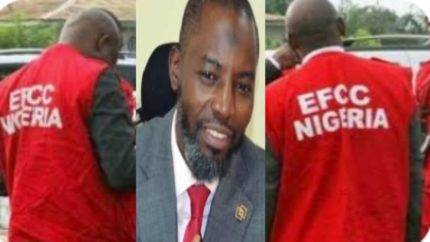
Details emerge from Idris’ written statement
In a significant moment of the trial, a statement dated May 16, 2022, penned by Ahmed Idris, took center stage as the prosecution witness partially read it aloud. Within its contents, Idris asserts that the Economic and Financial Crimes Commission (EFCC) gave him assurances that any information he disclosed would not be wielded against him. As this revelation unfolds, the scrutiny intensifies, delving into the credibility of Ahmed Idris’s statement and the intricacies of its origin. This narrative not only unveils the pivotal interaction between Idris and the EFCC but also prompts a closer examination of the broader dynamics shaping their relationship.
The May 16, 2022, document becomes a focal point, casting a spotlight on the delicate balance between the EFCC and Idris. The assurances offered by the anti-corruption agency take center stage, prompting a meticulous evaluation of the statement’s reliability. As the trial progresses, the nuanced circumstances surrounding the creation of this document emerge, offering a deeper understanding of the complex dynamics that underscore the interactions between key players. This scrutiny not only amplifies the significance of Ahmed Idris’s claims but also elevates the broader discourse on the credibility of information within the legal proceedings, adding depth and context to the unfolding narrative.
Contradictions arise in witness testimony
In a compelling cross-examination, the prosecution’s key witness, Hayatudeen Ahmed Ahmed, brings to light glaring contradictions within Ahmed Idris’ assertions. Despite Ahmed Idris adamantly asserting that he received assurances from the EFCC, Ahmed steadfastly denies any knowledge of such promises. This stark disparity in their narratives not only casts doubt on the credibility of Ahmed Idris’ claims but also questions the consistency of information presented by the defendants. The revelation of conflicting testimonies during this pivotal moment underscores the need for a meticulous examination of the case’s evidentiary foundation.
This clash of narratives not only challenges the veracity of statements made by the accused but also places the prosecution’s stance under scrutiny. The apparent divergence in perspectives creates an atmosphere of skepticism, prompting a closer inspection of the reliability of both the defendants’ and the prosecution’s positions on the matter. This nuanced exploration of conflicting accounts serves as a critical element in unraveling the intricacies of the case, ultimately contributing to a comprehensive understanding that could impact the final judgment.

EFCC seeks to present video evidence
In a groundbreaking turn of events during the trial, the Economic and Financial Crimes Commission (EFCC), led by the adept Rotimi Jacobs (SAN), has strategically introduced a pivotal element—video evidence. This compelling move aims to enhance the trial’s depth by presenting recorded interviews of the defendants. The inclusion of multimedia content, featuring the statements made by Ahmed Idris and his co-defendants, not only bolsters the evidentiary foundation but also provides a unique visual perspective, fostering a comprehensive understanding of the circumstances surrounding the case.
The EFCC’s innovative approach, spearheaded by Rotimi Jacobs (SAN), demonstrates a commitment to leveraging multimedia tools in legal proceedings. The introduction of video evidence marks a progressive step in legal strategy, potentially elevating the trial’s impact. This multimedia dimension not only adds weight to the evidentiary arsenal but also has the potential to engage audiences more profoundly, transcending traditional legal discourse and contributing to a nuanced understanding of the events in question.
Video evidence and its potential impact
In contemporary legal proceedings, the integration of video evidence adds a nuanced dimension, significantly impacting the trial’s dynamics. The court’s pivotal role in determining the admissibility of such evidence holds substantial weight, as it has the potential to profoundly influence the trajectory of the case. The intricate nature of this decision underscores the necessity for legal professionals, including both the prosecution and defense, to comprehend the profound implications associated with incorporating multimedia elements. In navigating this terrain, a comprehensive understanding of the challenges and advantages tied to video evidence becomes imperative for attorneys seeking to strategically present their cases in a manner that aligns with evolving legal standards.
As the legal landscape adapts to technological advancements, attorneys must adeptly navigate the complexities introduced by video evidence. The strategic utilization of multimedia elements holds the key to shaping legal narratives effectively. Legal practitioners need to remain cognizant of the evolving nature of trials, where video evidence can be a potent tool. By staying abreast of the latest developments and nuances in this realm, legal professionals can position themselves to make informed decisions that may significantly impact the outcomes of their cases. As the intersection of law and technology deepens, an informed approach to multimedia integration can be a crucial factor in achieving success in the ever-evolving legal landscape.
Table of Contents
Discover more from OGM News NG
Subscribe to get the latest posts sent to your email.





